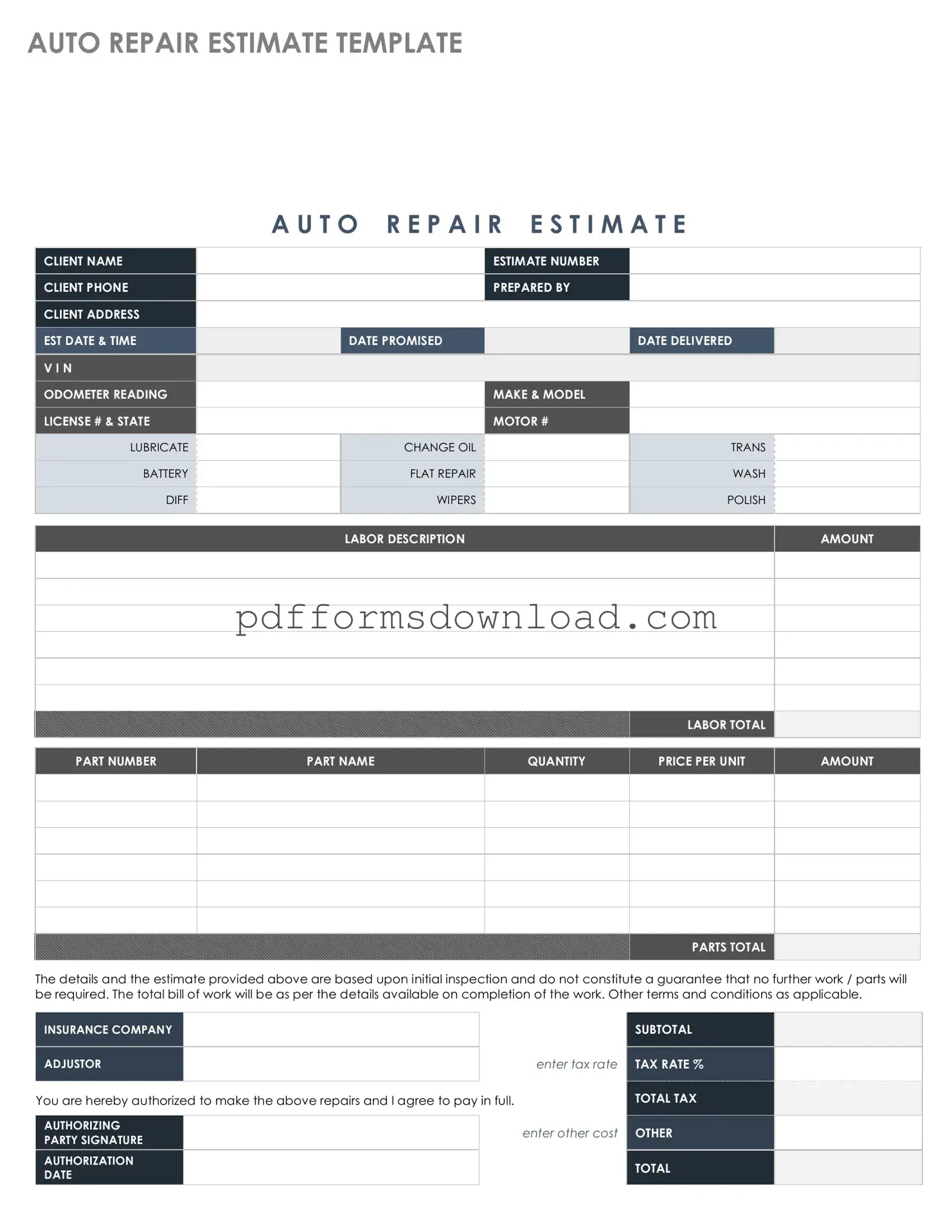What is the purpose of the Auto Repair Estimate form?
The Auto Repair Estimate form is designed to provide a clear and detailed estimate of the costs associated with repairing your vehicle. It outlines the services needed, parts required, and the total estimated cost. This helps you understand what to expect before any work begins, ensuring transparency in the repair process.
How do I fill out the Auto Repair Estimate form?
To fill out the form, start by providing your vehicle's make, model, and year. Next, describe the issues you are experiencing. Be as detailed as possible. Include any previous repairs or maintenance related to the current problem. Finally, provide your contact information to receive the estimate and any follow-up communication.
Can I get an estimate without bringing my car in?
Yes, you can receive an estimate without bringing your car in. By accurately describing the issues and any symptoms, you can obtain a preliminary estimate. However, keep in mind that a physical inspection may be necessary for a more accurate and final estimate.
Is the estimate provided binding?
The estimate is not binding. It serves as a guide to the expected costs based on the information provided. Once the repair shop inspects your vehicle, they may adjust the estimate based on their findings. Always confirm any changes before proceeding with the repairs.
How long does it take to receive my estimate?
The time to receive your estimate can vary. Typically, you should expect to receive it within a few hours to a couple of days, depending on the shop's workload and the complexity of the issues described. Prompt communication is encouraged to expedite the process.
What should I do if I have questions about my estimate?
If you have questions about your estimate, reach out to the repair shop directly. They can clarify any charges or services listed. Open communication is key to ensuring you fully understand the estimate and the necessary repairs.
